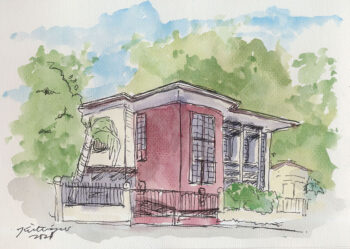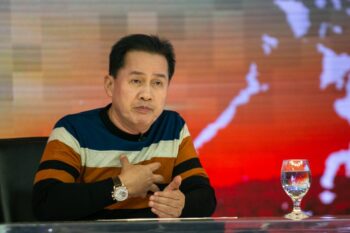CAGAYAN DE ORO CITY (MindaNews/29 March) — One wonders what good the synchronized barangay assemblies do for the grassroots in terms of empowering the people, good governance for the community, and its development. Given an agenda consisting mostly of reports verbally made by officials but not distributed, it does not invite attendance or serious participation, especially since they take up most of the time of the Assembly and leave little or nothing for serious deliberations.
The least they can do is furnish copies of their reports beforehand, preferably delivered to the homes, so people can read them and make intelligent comments or questions. Physical attendance is not enough.
It would be interesting to know what impact these assemblies have had thus far. Are local governments more responsive because of them, community needs better addressed? Is democracy at the grassroots more dynamic?
What’s notable is how the Assembly’s agenda is dictated from above. It may serve Malacanang’s or the DILG’s need for information, but it is not clear how it helps people govern better or exemplify autonomy (self-government).
For instance, why is it that local officials find it necessary to spend and devise gimmicks (distribute rice, serve refreshment, hold a raffle) to encourage attendance? One can understand why they would want a large attendance—as an indicator of the event’s success. But whether the prospect of taking part in the Assembly entices people to attend and participate is questionable.
*****
If it turns out that more people are motivated to show up to avail of the gimmicks and handouts than to participate, then something is very wrong. What in essence is the rubric of democracy and the rite of sovereignty for citizens is trivialized.
In fact the Barangay Assembly and its deliberations exemplify the meaning and substance of democracy as a government of the people, by the people, and for the people.
The people themselves, not their representatives, congregate to conduct the business of governing. They initiate policies and ordinances. They hear and pass upon the acts and decisions of public servants. They rectify what’s unacceptable or discipline errant behavior by wielding the power of initiative, referendum, or recall.
The Assembly is the formal venue and mechanism for undertaking the governing process—which also ensures transparency, accountability, and responsive service. It is the people’s parliament, the community’s legislative governing body, their constituent assembly.
*****
In other words, it is Government by the People literally—with everyone engaged/involved in performing the tasks of autonomy or self-government. The Assembly consists of every adult in the community, thus it is a Government of the People literally. And its acts and decisions are meant to secure or provide for the wellbeing of everyone, thus a Government for the People literally.
In fact its sessions exemplify direct democracy in action and sovereignty incarnate. In assembling and deliberating—doing so together—the people collectively fulfill the role of the barangay government as the primary planning and implementing unit of government.
But it is worrisome that their public servants (barangay officials) exploit the assembly to serve their own purposes, reducing their Boss’s role to mere spectators instead of as the main participants. Consider: a Barangay Assembly that starts at 9 a.m. often eats up three or more hours for its officials’ reports, then provides 30 minutes or so for an Open Forum, followed by refreshments.
*****
What’s supposed to be a community gathering turns out to be nothing more than a collection of spectators so the officials can have an audience for their reports and brag about alleged achievements.
People forget that this is THEIR assembly, not a platform for their servants to mount re-election campaigns. Letting officials take up most of the Assembly’s time limits the time citizens can devote to the business of governing, to air out concerns about their neighborhoods, or to express and exchange views on issues that affect them.
It is wrong for the officials to grab the limelight and be the Assembly’s center of attention. And wrong that they conduct it like a school convocation or, worse, like an election campaign’s “miting de avance”.
The people should be the center of attention. Or more accurately, their concerns, their views, and their ideas and proposals should be the Assembly’s focus. This is the community’s deliberative body, its highest authority, its incubator for community-based initiatives, especially for proposed reforms.
It is therefore where the will of the people must be given full play so it will emerge and form a consensus on important issues facing the community. Thus, this Assembly should be accorded the highest attention and consideration by everyone in every community. And its deliberations should be designed to accommodate the views, motions, and comments of the constituents.
(MindaViews is the opinion section of MindaNews. Manny Valdehuesa is former UNESCO regional director for Asia-Pacific; secretary-general, Southeast Asia Publishers Association; director, Development Academy of Philippines; member, Philippine Mission to the UN; vice chair, Local Government Academy; member, Cory Govt’s Peace Panel; awardee, PPI-UNICEF outstanding columnist. Author of books on governance, he is national chairman/convenor of Gising Barangay Movement Inc. valdehuesa@gmail.com)







